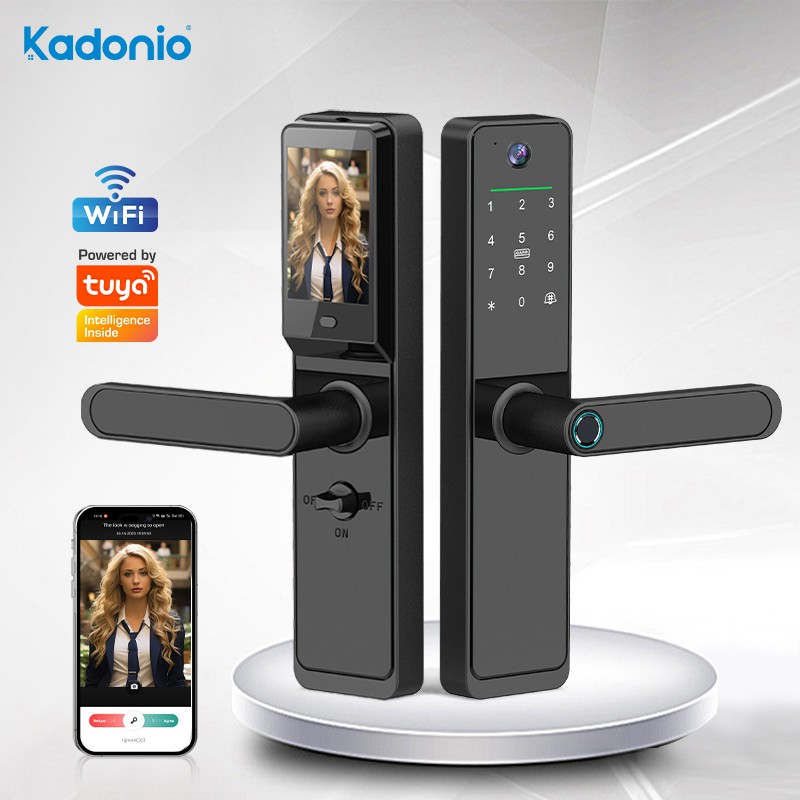In recent years, with the rise of smart home technologies and the Internet of Things (IoT), smart locks have emerged as one of the most promising and popular home security solutions. Despite their growing prevalence, many consumers remain unaware of the common pitfalls associated with purchasing smart locks. Here, we outline four misconceptions that can lead to poor choices when selecting these devices.
1. More Features Do Not Equal Better Security
The market for smart locks is flooded with various models, each boasting a plethora of features. Companies often embellish their products with multiple opening methods and security options, leading consumers to believe that more features equate to higher value. Terms like “biometric access,” “remote control,” and “emergency override” can overwhelm potential buyers, making them nod in agreement without fully understanding what they entail.
However, the reality is that not all features enhance security. Every smart lock has vulnerabilities that could be exploited. When selecting a smart lock, it is crucial to assess not just the features it offers, but also the security measures it employs to counteract potential tampering. Emerging technologies, like Bluetooth connectivity, add convenience but can also introduce risks. Opting for a smart lock only after it has been rigorously tested and deemed secure is a more prudent approach.
2. Price Should Not Be the Sole Consideration
With the vast array of smart lock brands available, prices can vary significantly. This range often leads consumers to gravitate toward cheaper options. However, as evidenced by recent controversies surrounding poorly designed products, opting for the lowest price can come with serious drawbacks. Many inexpensive locks lack adequate circuit protection, leaving them vulnerable to interference from high magnetic fields.
It is essential to remember that smart locks are electronic devices; therefore, overly cheap products are unlikely to provide quality assurance or reliable customer service. A malfunctioning smart lock can pose serious safety risks and be challenging to resolve without proper support. Selecting a well-established brand with a proven track record in product quality and after-sales service is advisable.
3. Overemphasis on Aesthetic Design
Smart locks are not only functional but also serve as a visible component of home decor. Many consumers prioritize stylish designs, desiring locks that appear elegant and high-end. While aesthetic appeal is undoubtedly important, it should not overshadow the primary function of the lock—security. The safest smart lock is the one that protects your home, regardless of how it looks.
When considering design, ensure that it does not compromise the lock’s safety features. The best smart locks seamlessly blend functionality and aesthetics, providing both style and peace of mind.
4. Incorrect Operation Compromises Safety
Some users mistakenly believe that simply replacing a traditional mechanical lock with a smart lock will enhance their security. This assumption is flawed. Even with a smart lock, if you neglect to engage the lock properly, you leave your home vulnerable. For instance, a criminal can use a thin card to manipulate the locking mechanism if the lock isn’t secured correctly.
To maximize security, it is vital to cultivate good habits, such as always locking the door when leaving the house. Proper usage of smart locks is fundamental in safeguarding your home.
When selecting a quality smart lock, security should always take precedence. Here are some critical features to look for:
- C-Class Lock Cylinder: With advancements in lock technology, there are established standards for security. Choose products that have passed national quality assessments, ensuring that they meet rigorous safety criteria. Look for B-level or higher lock cylinders, as A-level cylinders can be compromised within a minute. High-quality smart locks often incorporate additional protective features, like a cover plate that hides the lock cylinder to prevent tampering.
- Semiconductor Fingerprint Recognition: Among the various biometric technologies available, semiconductor fingerprint recognition stands out as the safest choice. While duplicating fingerprints is challenging, selecting a lock that fundamentally prevents unauthorized copying enhances security. Furthermore, ensure that the fingerprint recognition area is sufficiently large; a larger scanning surface generally allows for quicker and more accurate identification.
- Design to Prevent Bumping: Traditional door locks face a significant risk known as “bumping,” where a tool can be inserted through the peephole to manipulate the lock. Many smart locks now feature a free-spinning handle that cannot be disengaged from the outside without pressing a specific button simultaneously. This design not only mitigates the risk of unauthorized access but also prevents accidental openings by children.
- Anti-Clamping Design: The locking mechanism comprises parts that control the movement of locking bolts. Intruders can exploit small openings to manipulate these components. To counteract this, many smart locks incorporate a protective ring around the internal mechanisms, significantly increasing resistance to tampering.
While compact, smart locks integrate sophisticated technology, including electronic circuit boards, mechanical cores, and fingerprint scanners. These components work in harmony, providing enhanced functionality and connectivity with other smart home devices. Moreover, through seamless integration with the Internet, smart locks can facilitate a wide range of interactive security features.
In conclusion, while purchasing a smart lock may seem straightforward, being aware of these common misconceptions can help you make a more informed choice. Prioritize security features, select reputable brands, and cultivate proper usage habits to truly benefit from the advantages that smart locks offer.
Post time: Sep-25-2024





